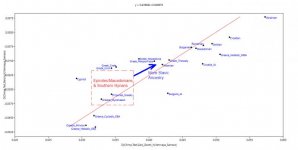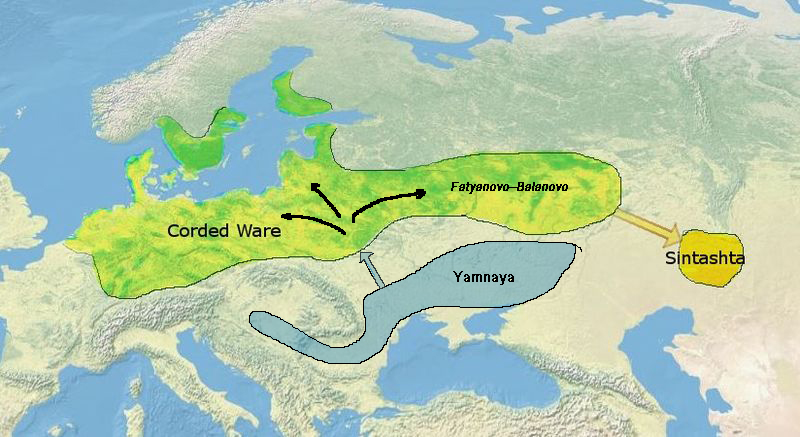I would really like to see a side by side comparison of dates with corresponding snps to see the movement of R1a versus R1b. When I have some time. Oldest R1a all branches versus R1b L51/z2103. In Yamnaya (akaTurganik Dom2) Afanasievo,CordedWare(aka horseless Ware), Bell Beaker, Latins, Albanians, Macedonians, Armenians, Greeks,Iranians, Scythians,Sarmatians.
"We observe that, on the steppe, R-M12149
Y chromosomes (within haplogroup R1b) at the beginning of the 3rd millennium BCE,
associated with the Yamnaya, were replaced
by the beginning of the next millennium by
R-Z93 Y chromosomes (within haplogroup
R1a), associated with Corded Ware/Fatianovo
(35) steppe descendants such as those of the
Sintashta culture (34). Genetic data cannot dis-
tinguish whether this Y-chromosome replace-
ment was the result of competition between
patrilineal groups from the steppe, one of
which may have had cultural adaptations such
as usage of an improved variety of domesti-
cated horse (37), or whether one group simply
filled an ecological niche vacated by earlier
groups. A fuller understanding of the reason for
this profound genetic change requires combined
analysis of genetic and archaeological data."
-this is how your question is partially addressed in the new paper.










